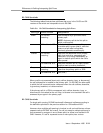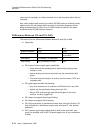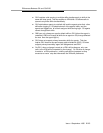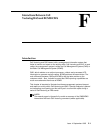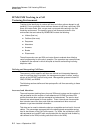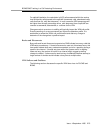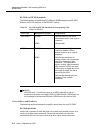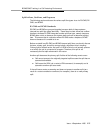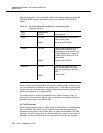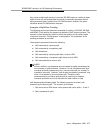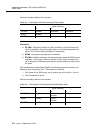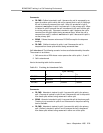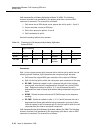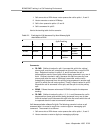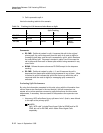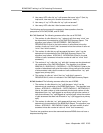
Interactions Between Call Vectoring/EAS and
BCMS/CMS
F-6 Issue 4 September 1995
With this discussion in mind, let’s take a look at the following table to see how R3
CMS and BCMS interpret split flows for the G1/G3 versions of the DEFINITY
switch:
When a call is not answered [due to a(n) outflow, abandon, busy, or disconnect],
the call’s disposition is tracked for the primary split. On R3 CMS, the other splits
to which the call is queued track a dequeue when the call outflows, abandons, is
given busy treatment, or is disconnected.
If the primary split in a VDN is unmeasured, a(n) outflow, abandon, busy, or
disconnect is not tracked for the call. Also, an answer is not tracked if the call is
answered by an agent in the primary split.
R2 CMS Standards
When multiple split queuing is involved, a call can look like two or three separate
calls to R2 CMS. As a result, if a call is queued to multiple splits and is then
answered by an agent in one of these splits, an
inflow
is not tracked in R2 CMS.
However, if a call is
requeued
to one or more splits (via a
route to
command, for
example), an
inflow
is tracked
only in the first split to which the call requeues
.
Table F-2. R3 CMS and BCMS Standards for Interpreting Split
Flows (in G1/G3)
Flow Management
Type System Interpretation
Inflow R3 CMS
BCMS
Calls answered by a split other
than a primary split.
(Same as for R3 CMS.)
Outflow R3 CMS
BCMS
Calls that are dequeued from a
primary split via a
route-to
or
messaging split
command, or by
being answered by an agent in
another split to which the call is
also queued.
(Same as for R3 CMS.)
Dequeue R3 CMS
BCMS
Calls that are dequeued from
and not answered by any split
other than the primary split in a
VDN.
(Not tracked.)



